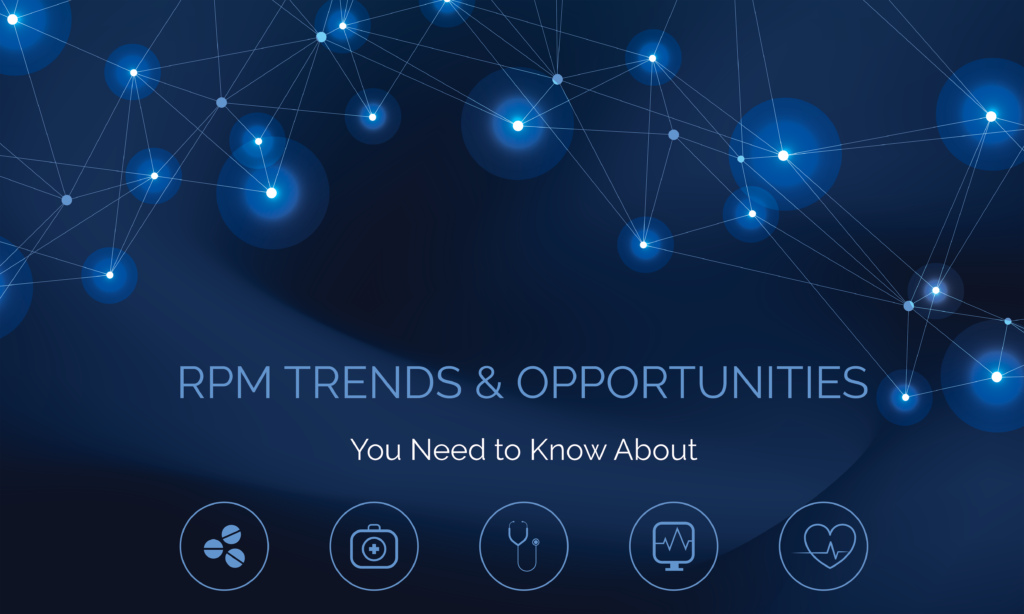Remote Patient Monitoring (RPM) devices have been continuously advancing and innovating since the technology was catapulted into the mainstream during the pandemic. RPM solutions are now indispensable tools for healthcare professionals particularly in managing patients with chronic conditions.
RPM uses telecommunication technologies to capture and transmit patient data in near real-time and enable clinicians to ascertain patients’ health status, detect small problems before they escalate, and make timely interventions. RPM has been effective in delivering care and its market is poised to further grow and expand with more consumers leaning on telehealth for their care.
Hence, leading market research companies are looking into RPM market trends as the industry is expected to rapidly grow in the next five to eight years; a big leap from its market value during the pandemic when RPM was the most sought-after industry. In 2021 alone, the RPM market reached $1.1 billion.
Understanding the drivers of this growth and the opportunities it opens to providers can help practices increase their revenue while ensuring a higher standard of care for their high-risk, high-cost patient population.
What the data and forecasts reveal
GlobalData, a data and analytics company, forecasts the biggest increase will be in the wearable tech sector, which can easily reach $54.4 billion by 2023 from $22.9 billion in 2018 at a compound annual growth rate (CAGR) of 19% according to its thematic research published last July.
Early on, RPM adoption faced some setbacks with privacy concerns and doubts about its accuracy. A GlobalData poll, however, revealed that 66% of 201 respondents are now willing to use an RPM device, which could be indicative that there is a much larger target audience for the solution. Patients who can benefit the most from RPM are those with diabetes, kidney disease, heart disease, and arrhythmias as any small change can be easily detected for timely intervention when necessary.
Despite early concerns, 37 new companies are launching RPM products for COVID-19 and general diagnostic purposes. There is also increasing pressure on these companies to strengthen data security and privacy.
The latest report by IMARC Group, a market research company, offers a comprehensive analysis of the industry with insights into the RPM market and also shows an upward trend. In its press release early this October, the RPM market is expected to reach $2.7 billion by 2027 with a CAGR of 16.1% from 2022 to 2027.
The rapid growth of RPM has primarily been driven by the need for healthcare providers to be able to monitor patients with moderate COVID-19 symptoms and provide them with hospital care when needed. There was an urgent need for a quick solution to unburden the hospitals so providers can focus on critical patients.
Further boosting RPM demand is an increasing number of patients with heart disease along with an aging patient population more susceptible to getting chronic conditions. However, it is the effectiveness of the solution and the rapid advancement of RPM technology that significantly impact market trends.
What opportunities are open for you
Whereas before providers and insurers were reluctant to adopt RPM, the latest trends and opportunities provide compelling arguments to drive adoption. RPM addresses many of the pain points of medical practices in caring for elderly patients with chronic conditions. RPM offers valuable benefits to patients, providers, and the healthcare system itself.
How?
1. Addresses shortage of doctors
The healthcare industry is beset with a human resource shortage with fewer doctors to care for an increasing number of very sick elderly people. In 2020, a report published by the Association of American Medical Colleges estimates a shortage of 54,100 to 139,000 physicians by 2033. This shortage spans primary and specialty care. Hence, RPM is the most viable solution to improve efficiency in the delivery of care while enhancing patient engagement and satisfaction.
2. Provides preventative care
RPM is designed to help doctors make sound clinical decision-making by providing them with a clearer picture of the patient’s health status in-between appointments and outside of the traditional healthcare setting. It is meant for patients with chronic conditions who are unable to properly manage their disease. RPM takes care of the in-between office visits where patients could potentially have an acute episode that would require an ER visit or hospitalization. Hence, RPM is well positioned to significantly reduce healthcare spending on chronic care.
The technology offers more advanced features
RPM is now much more advanced with Artificial Intelligence and Machine learning able to filter data and alert clinicians when abnormal measurements are detected. This is a big improvement from just dumping data on the clinician’s lap. In the past, early devices were wrought with a few kinks like too much data coming in and forcing clinicians to do either one of two things: to sift through an enormous amount of data or ignore it altogether. Some practices that took the risk early on found the technology to be difficult, especially for older patients. Doctor’s offices have turned into IT support, causing disruption and inefficiencies in the practice. Moreover, there was hardly any insurance support so doctors do not get paid when they recommend an RPM device to a patient.
1. It can now be outsourced.
To avoid a huge financial investment in setting up and building the RPM program, practices can look to outsourcing. RPM vendors now take the time to understand a practice workflow and aid doctors in caring for their patients easily without additional burdens to the staff. Moreover, vendors can provide wearables and at-home devices that are now more sophisticated and intuitive, enabling even the less tech-savvy of patients to easily use them.
2. Brings in new revenues
Doctors are finally getting paid for patients using an RPM device. In 2018, Medicare introduced billable codes so providers can get reimbursed when they enroll patients in the RPM program. RPM can also be stacked with a care coordination service, Chronic Care Management (CCM), to synchronize care and bring in additional revenues to the practice.
The need for consolidation
The RPM market is filled with several startups creating and developing devices, software, and cloud systems to fill in the demand, especially by Baby Boomers, the oldest and longest-living generation, accounting for the largest demographic to use RPM. Having different kinds of devices with different functionalities will not be beneficial to patients who may have to use more than one device, learn how to use them, and troubleshoot when needed.
Patients may be turned off or discouraged to participate if they feel the program requires them to navigate different kinds of complicated devices and apps. Hence, the RPM market needs to consolidate all available technology to promote a seamless experience for the patients. Only then can RPM serve its true purpose to have patients want to use them in managing their care. And only then can providers get reimbursed for the service.
Ascent Care Partners (ACP) is a virtual healthcare service company providing turnkey RPM solutions with fully configured devices ready-to-be-used outside the box and software that can be easily integrated into a practice workflow without causing disruption. ACP offers a full service including patient support, shipping of devices, collecting and reviewing of data, patient check-ins, and preparation of billing charges. Together with our turnkey CCM service, we enable a practice to grow clinically and financially.



